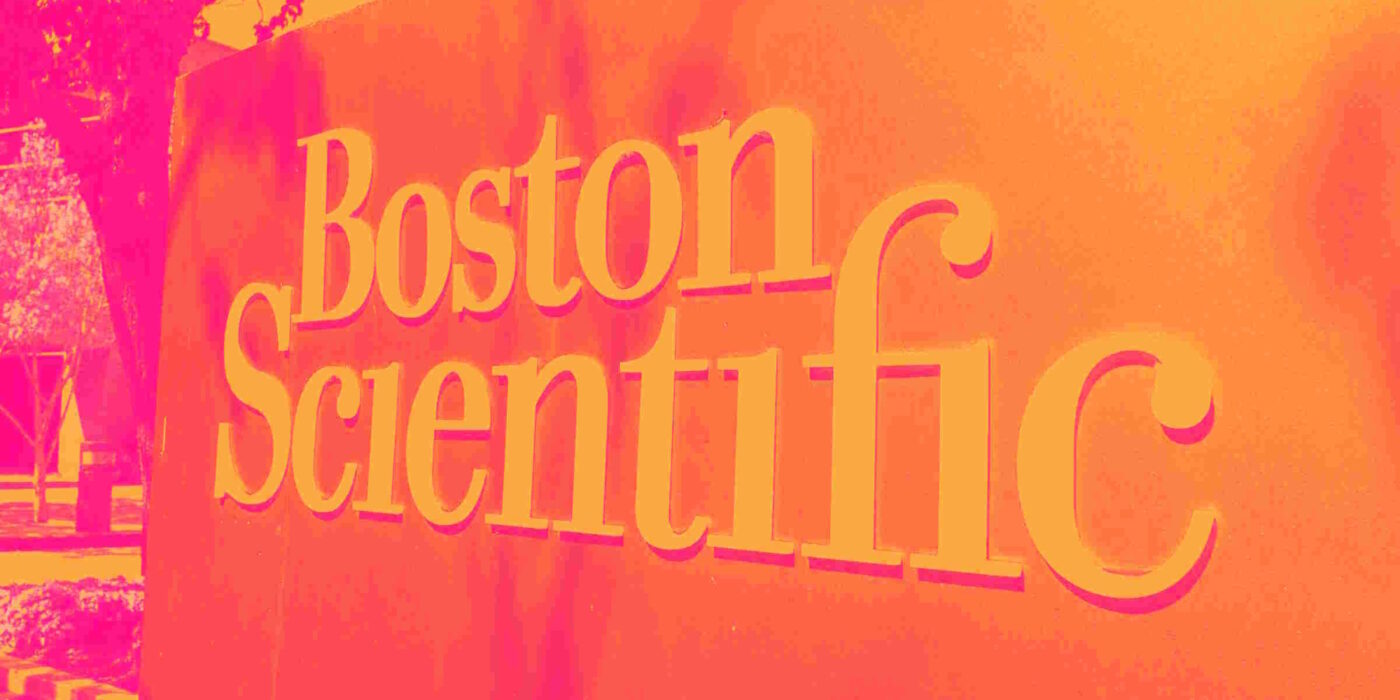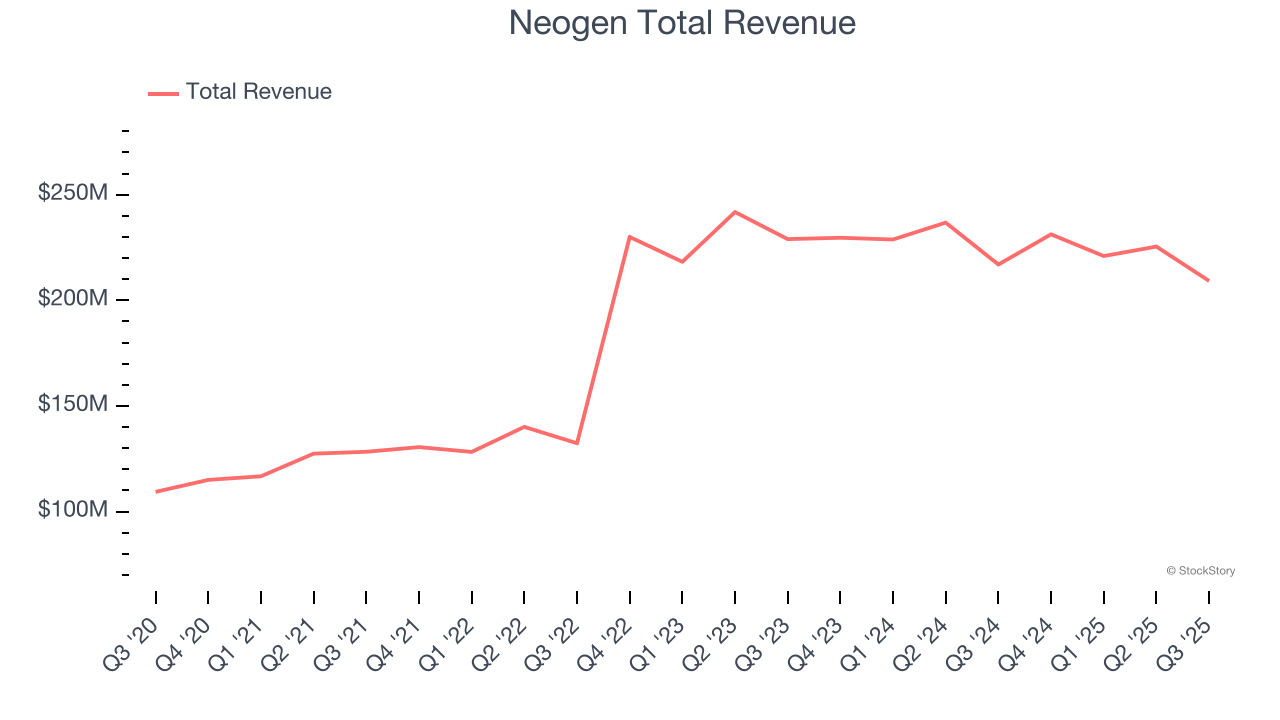
Quarterly earnings results are a good time to check in on a company’s progress, especially compared to its peers in the same sector. Today we are looking at Boston Scientific (NYSE:BSX) and the best and worst performers in the medical devices & supplies - diversified industry.
The medical devices industry operates a business model that balances steady demand with significant investments in innovation and regulatory compliance. The industry benefits from recurring revenue streams tied to consumables, maintenance services, and incremental upgrades to the latest technologies. However, the capital-intensive nature of product development, coupled with lengthy regulatory pathways and the need for clinical validation, can weigh on profitability and timelines. In addition, there are constant pricing pressures from healthcare systems and insurers maximizing cost efficiency. Over the next several years, one tailwind is demographic–aging populations means rising chronic disease rates that drive greater demand for medical interventions and monitoring solutions. Advances in digital health, such as remote patient monitoring and smart devices, are also expected to unlock new demand by shortening upgrade cycles. On the other hand, the industry faces headwinds from pricing and reimbursement pressures as healthcare providers increasingly adopt value-based care models. Additionally, the integration of cybersecurity for connected devices adds further risk and complexity for device manufacturers.
The 5 medical devices & supplies - diversified stocks we track reported a mixed Q3. As a group, revenues beat analysts’ consensus estimates by 0.6% while next quarter’s revenue guidance was in line.
While some medical devices & supplies - diversified stocks have fared somewhat better than others, they have collectively declined. On average, share prices are down 4.6% since the latest earnings results.
Boston Scientific (NYSE:BSX)
Founded in 1979 with a mission to advance less-invasive medicine, Boston Scientific (NYSE:BSX) develops and manufactures medical devices used in minimally invasive procedures across cardiovascular, urological, neurological, and gastrointestinal specialties.
Boston Scientific reported revenues of $5.07 billion, up 20.3% year on year. This print exceeded analysts’ expectations by 1.9%. Overall, it was a very strong quarter for the company with a solid beat of analysts’ organic revenue estimates and revenue guidance for next quarter topping analysts’ expectations.
"We delivered another exceptional quarter of strong performance across businesses and regions thanks to the winning spirit of our global team," said Mike Mahoney, chairman and chief executive officer, Boston Scientific.

Boston Scientific pulled off the fastest revenue growth of the whole group. Investor expectations, however, were likely higher than Wall Street’s published projections, leaving some wishing for even better results (analysts’ consensus estimates are those published by big banks and advisory firms, not the investors who make buy and sell decisions). The stock is down 1.6% since reporting and currently trades at $98.26.
Best Q3: Neogen (NASDAQ:NEOG)
Founded in 1981 and operating at the intersection of food safety and animal health, Neogen (NASDAQ:NEOG) develops and manufactures diagnostic tests and related products to detect dangerous substances in food and pharmaceuticals for animal health.
Neogen reported revenues of $209.2 million, down 3.6% year on year, outperforming analysts’ expectations by 2.6%. The business had a very strong quarter with a solid beat of analysts’ revenue estimates and full-year revenue guidance slightly topping analysts’ expectations.

Neogen achieved the biggest analyst estimates beat among its peers. The market seems content with the results as the stock is up 1.6% since reporting. It currently trades at $5.86.
Is now the time to buy Neogen? Access our full analysis of the earnings results here, it’s free for active Edge members.
Weakest Q3: Baxter (NYSE:BAX)
With a history dating back to 1931 and products used in over 100 countries, Baxter International (NYSE:BAX) provides essential healthcare products including dialysis therapies, IV solutions, infusion systems, surgical products, and patient monitoring technologies to hospitals and clinics worldwide.
Baxter reported revenues of $2.84 billion, up 5% year on year, falling short of analysts’ expectations by 1.4%. It was a softer quarter as it posted a significant miss of analysts’ full-year EPS guidance estimates and revenue guidance for next quarter missing analysts’ expectations significantly.
Baxter delivered the weakest performance against analyst estimates in the group. As expected, the stock is down 18.5% since the results and currently trades at $18.27.
Read our full analysis of Baxter’s results here.
Stryker (NYSE:SYK)
With over 150 million patients impacted annually through its innovative healthcare technologies, Stryker (NYSE:SYK) develops and manufactures advanced medical devices and equipment across orthopedics, surgical tools, neurotechnology, and patient care solutions.
Stryker reported revenues of $6.06 billion, up 10.2% year on year. This number met analysts’ expectations. Overall, it was a satisfactory quarter as it also produced organic revenue in line with analysts’ estimates.
The stock is flat since reporting and currently trades at $369.45.
Read our full, actionable report on Stryker here, it’s free for active Edge members.
Abbott Laboratories (NYSE:ABT)
With roots dating back to 1888 when founder Dr. Wallace Abbott began producing precise, dosage-form medications, Abbott Laboratories (NYSE:ABT) develops and sells a diverse range of healthcare products including medical devices, diagnostics, nutrition products, and branded generic pharmaceuticals.
Abbott Laboratories reported revenues of $11.37 billion, up 6.9% year on year. This print was in line with analysts’ expectations. Aside from that, it was a mixed quarter as it also recorded organic revenue in line with analysts’ estimates but revenue in line with analysts’ estimates.
The stock is down 4.4% since reporting and currently trades at $127.35.
Read our full, actionable report on Abbott Laboratories here, it’s free for active Edge members.
Market Update
In response to the Fed’s rate hikes in 2022 and 2023, inflation has been gradually trending down from its post-pandemic peak, trending closer to the Fed’s 2% target. Despite higher borrowing costs, the economy has avoided flashing recessionary signals. This is the much-desired soft landing that many investors hoped for. The recent rate cuts (0.5% in September and 0.25% in November 2024) have bolstered the stock market, making 2024 a strong year for equities. Donald Trump’s presidential win in November sparked additional market gains, sending indices to record highs in the days following his victory. However, debates continue over possible tariffs and corporate tax adjustments, raising questions about economic stability in 2025.
Want to invest in winners with rock-solid fundamentals? Check out our Top 5 Growth Stocks and add them to your watchlist. These companies are poised for growth regardless of the political or macroeconomic climate.
StockStory’s analyst team — all seasoned professional investors — uses quantitative analysis and automation to deliver market-beating insights faster and with higher quality.
